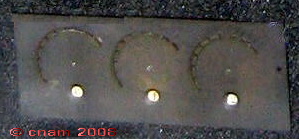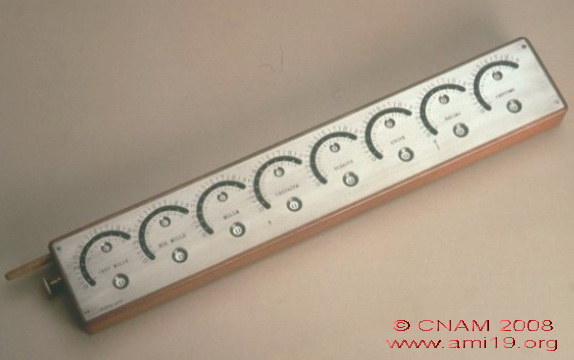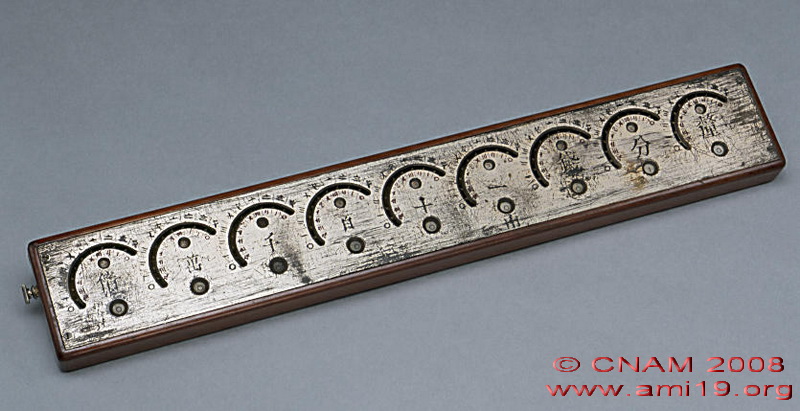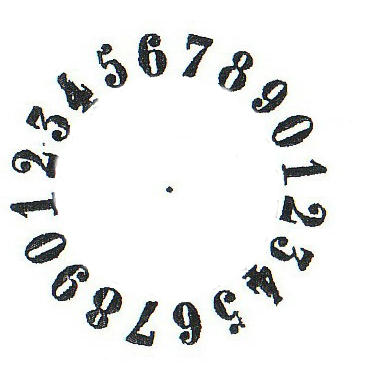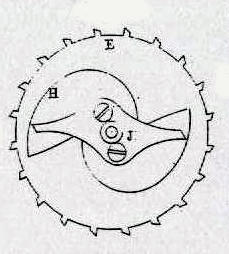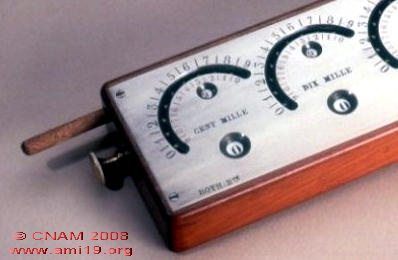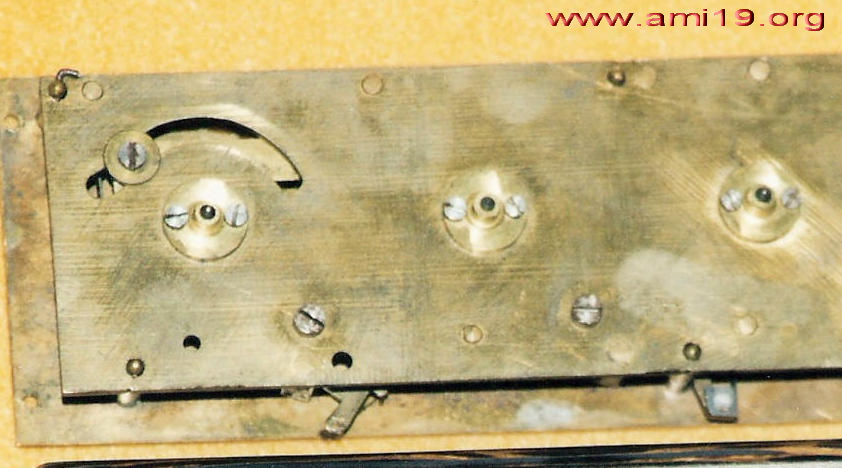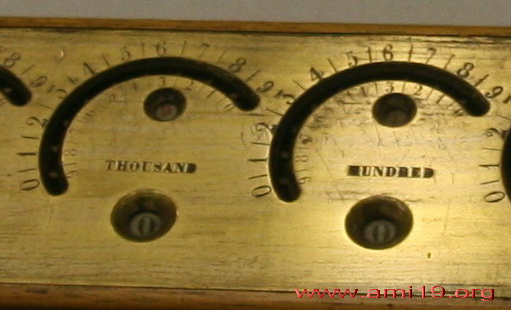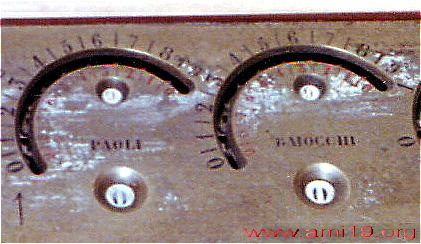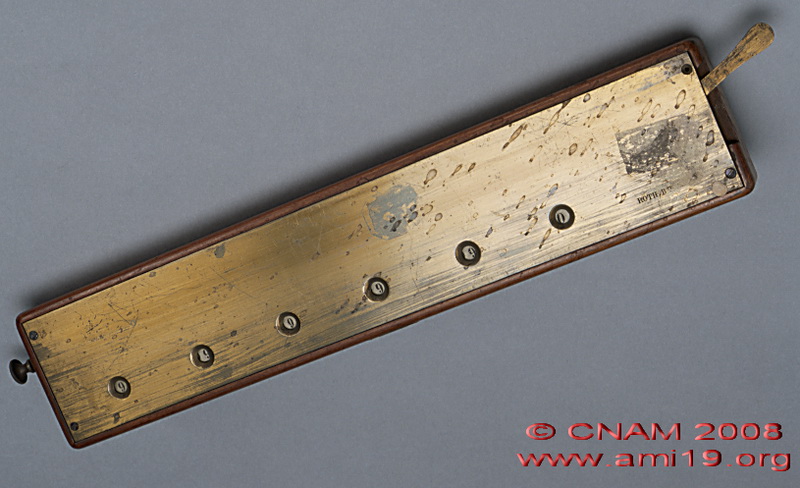English version
by Eric Schurmann, November 2008*
General principle
The instrument is enclosed in an oblong teak box. It consists of an upper plate in bronze pierced by rounded slots through which the toothed wheels of the dials are partially visible. These wheels have twenty teeth on their circumference which correspond to the doubled series of numbers 0.1.2.3.4.5.6.7.8.9.
Jumper springs, made up of a simple flat spring, stop the wheel at each tooth.
The carry mechanism is extremely efficient. Between each pair of wheels there is an L-shaped lever, fixed on an axle and held by a spring. A double cam underneath each toothed wheel progressively winds up the lever and releases it suddenly. Under the pressure of the spring, the lever acts like a balance and makes the next wheel move forward a notch (one unit).
It is as Théodore Olivier said, "the imitation of the normal method of calculation where the excess of units is transferred to the tens, that of the tens to the hundreds, and so on…"
The mechanism for resetting to zero is equally ingenious. The lower plate has three curved slots over which a flat rod, armed with little pins, moves. When one pulls the rod, it describes a slight semi-circular movement. The small pins act on propellor-shaped pieces which are placed under the double cams. Whatever their position, they are all going to form a horizontal line which, on the dial figures, corresponds to a value of 9. The operator then has only to add one unit with his stylus to pass from 99999999 to 00000000.
Variations
There are many variations on the model R12. Some have different capacities. Some have no mechanism for resetting to zero. Others have been adapted for foreign markets. There are simple adders and adder-subtractors. But all share the toothed wheel, the double cam and the lever.
|
1) Capacity
II) Simple adder / Adder soustractor
Simple adder |
Adder soustractor
|
|
|
Simple numbering |
Complementary numbering |
|
|
III) Mechanism for resetting to zero.
view of the mechanism |
propellor under the double cam |
|
|
Stylus and button on the rod for resetting to zero |
Machine without zeroing mechanism
|
|
|
Detail |
Détail of the machine without mechanism |
|
|
Curved slot cut into the lower plate to guide the movement of the resetting rod |
|
III) Foreign models
German |
British |
|
|
Italian |
Russian |
|
- |
Japanese
|
|
|
IV) The counters
Roth invented a counter based on the same mechanism as the model R12 described above. By adding an ordinary lever to the first release, the machine can be used as a counter in industry.
Roth counter with resetting mechanism (figure) |
|
| |
|
|
|
Counter (photo) |
|
*English version
by Eric Schurmann, November 2008*
|


